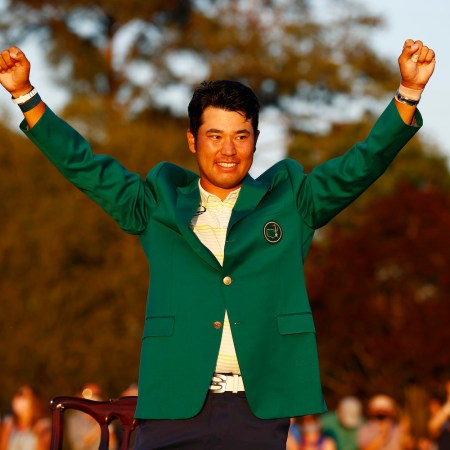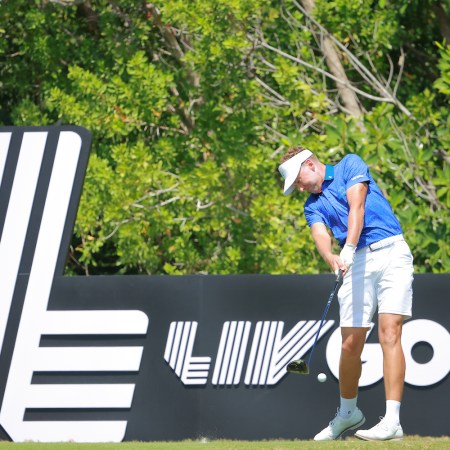“I believe I’m the best golfer in the world.”
Rory McIlroy says it without the slightest note of arrogance or aggression. While there’s a small handful of men on Earth who would look to take issue with the decisiveness of the remark, there are none who could really consider it that outrageous. The 30-year-old from Northern Ireland knows that, and carries himself as though that reality pushes him through his day and from win to win.
He sits in a wood-paneled conference room at TPC Sawgrass, the Florida home of the Player’s Championship — the richest tournament on the PGA tour and the first big event of golf’s spring calendar. He’s the reigning champion around these parts, in addition to being the reigning Fedex Cup Champion and 2019 PGA Player of the Year, despite not winning a major.
There was a time when professional golfers had to play check-to-check to make a living. The 21st-century opportunities for Rory McIlroy and players at his level stack countless endorsement deals on top of seven-figure tourney purses to build well-secured personal fortunes even before they hit their prime. With long-standing agreements in place with Nike and TaylorMade, McIlroy is set for life. So if money isn’t what drives him to beat the best at Augusta or Royal St. Andrews, what does?
“Wanting to be remembered as one of the best to play the game of golf is what keeps me going,” McIlroy says. “I want to make the most out of the gifts and the opportunity I’ve been given — to prove to myself that I am the best.”
While McIlroy looks out on the 18th green at Sawgrass, news breaks that the Golf Writers Association of America named Brooks Koepka 2019 PGA Tour Player of the Year over runner-up Mcilroy. The Irishman edged Koepka for his PGA Player of the Year honor, so a media-driven public rivalry looms over every course.
“(The media) always looked to build a battle between Brooks and me,” McIlroy shrugs. “That’s just what the media does. They want to make a good guy and a villain because that’s better for them. Who’s who will be up to them to decide.” Koepka said something similar last year.
One time that McIlroy is happy to play the villain for American golf fans is the biennial Ryder Cup, which will come to Wisconsin’s Whistling Straits in September. As one of the most prominent weapons on the European team, McIlroy shows a flair for enthusiasm and defiance that’s rarely seen when he’s trodding the course at tour events.
“The Ryder Cup resonates with fans because you get to choose one side or the other. In this game, you don’t often get to do that. A fan can have favorites among a 150-player field, but there isn’t as much of a connection to that player as there is to the team — Europe or America … I show more fire during the Ryder Cup because I’m not playing for myself. I’m playing for my teammates, and I want to contribute and show some leadership.”
The Players champion is also prepared for U.S. crowds to be riled up for The Cup battle. “I’m a big proponent that golf does not have to be like football or any other sport because it’s a wonderful game of etiquette and traditions,” he says. “But to grow the game and add a new fanbase to the game, that (noisier crowd) is going to happen.”
Another spectator trend that McIlroy has taken note of is the way in which public sports gambling has begun to creep into golf. He fear a fan’s misguided effort to affect the outcome of an event could be inevitable.
“I worry someone could shout during a backswing or something like that,” he proposes. “(Gambling) is changing the sporting landscape a lot, and we need to find the right balance.”
His position atop golf also affords McIlroy the opportunity to help scores of people and organizations in need. He recently closed down his charity–centered Rory McIlroy Foundation after discovering he could have a more positive impact contributing on his own.
“I find I can do more good for the causes that are important to me by donating money directly to them. From my foundation as a 501 charity, there are a lot of regulations and requirements to keep that status. There are things you need to do — things you need to achieve … For example, 66 percent of the money you raise as a 502 has to come from outside sources. I didn’t want to run to people for money all the time in the midst of playing on the tour.”
McIlroy also points out how running a sizable charity organization means that a disproportionate amount of money can find its way to the bottom-line realities of maintaining a functioning foundation.
“We ran the Irish Open for four years and raised millions and millions of dollars for charity. But maybe $200,000 of that had to go to running hospitality for the week. You end offering only a portion of what you raised to the causes that need it. As an individual [who donates], there’s less overhead, no operating costs.”
“It’s not that I would never open the foundation again, but at this point of my career — in which golf is my main focus — I can donate to the causes in a private manner.”
Underprivileged children lead the list of those personal causes, and McIlroy does work with UNICEF while also aiding the Cancer Fund for Children in Northern Ireland. He set up two respite homes in the region for families needing a place to escape the rigors of a young person’s intensive cancer treatment. He plans to maintain those efforts while consolidating his place on top of the PGA’s elite.
“I’ve got another 10 or 12 years at the top of the game, hopefully. And, when I’m finished, I would like to leave my mark on a game I’ve loved my whole life and played growing up — to be remembered for that. I’m not there yet, but I’m close.”
This article was featured in the InsideHook newsletter. Sign up now.


















